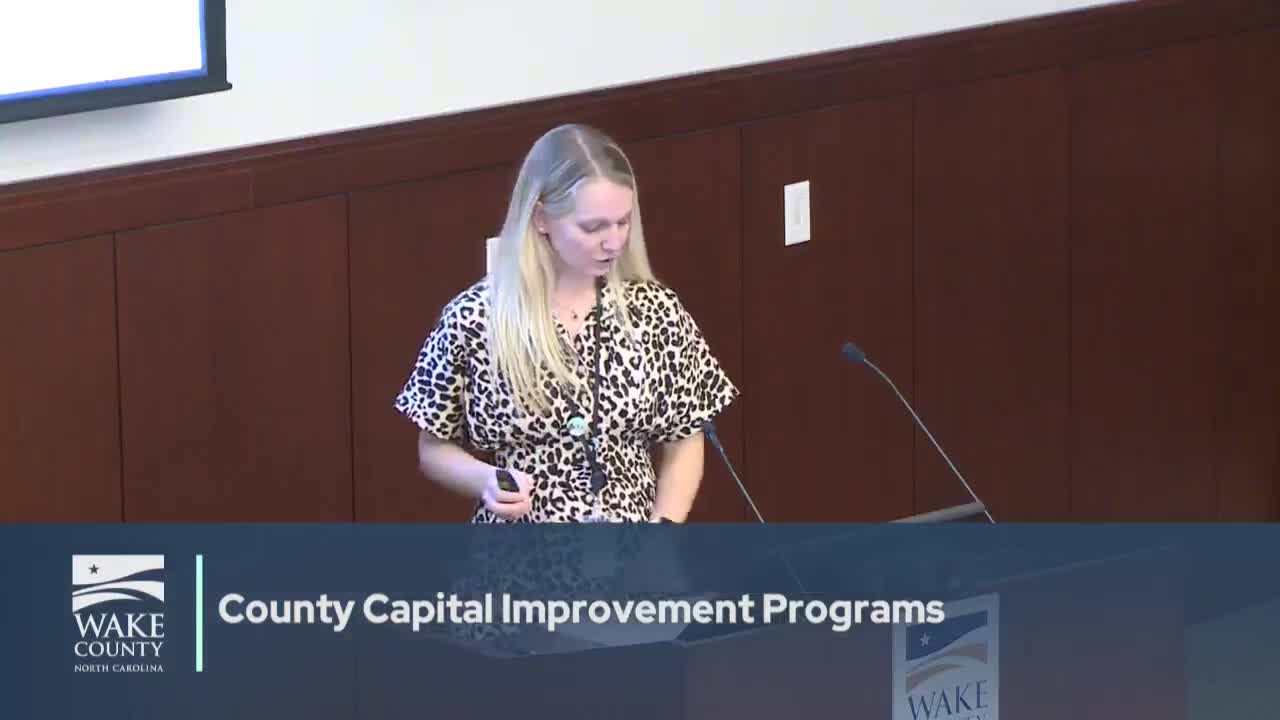Wake County outlines $1.15 billion capital improvement plan for FY 26 through FY 32
May 12, 2025 | Wake County, North Carolina
This article was created by AI summarizing key points discussed. AI makes mistakes, so for full details and context, please refer to the video of the full meeting. Please report any errors so we can fix them. Report an error »

In a recent Wake County government meeting, officials outlined a comprehensive capital improvement plan (CIP) for the fiscal years 2026 through 2032, totaling $1.15 billion. This plan aims to address critical infrastructure needs while ensuring the sustainability of county facilities. The discussions highlighted the importance of balancing projected revenues with the increasing demands for maintenance and new projects.
The meeting began with a review of capital requests from various county departments, revealing that initial requests exceeded available funding sources. However, adjustments made during the planning process aligned the new funding needs with anticipated revenue, allowing for a focus on maintaining and improving the county's extensive building portfolio, which encompasses over 5,000 square feet.
A significant aspect of the plan is the allocation of a portion of the property tax rate—15 cents—dedicated to debt and capital funds. This funding structure supports both debt service and cash funding for essential projects, such as replacing roofs and HVAC systems, which are crucial for maintaining county facilities. The plan also includes a 0.25-cent tax increase linked to a recently approved library bond.
Key projects within the CIP include the construction of new Emergency Medical Services (EMS) stations, renovations to existing facilities, and the installation of energy conservation measures, such as solar technology. These initiatives align with the county's commitment to achieving 100% renewable energy, as established in a resolution passed in 2018.
The meeting underscored the county's proactive approach to infrastructure planning, with a focus on safety, security, and sustainability. As the first year of the seven-year plan is appropriated with the FY 26 budget, officials emphasized the importance of annual reviews to adjust timelines and cost estimates based on funding availability.
In conclusion, the Wake County capital improvement plan represents a strategic effort to meet the growing needs of the community while ensuring the longevity and efficiency of county facilities. As the plan progresses, officials will continue to assess and adapt to the evolving demands of the county's infrastructure.
The meeting began with a review of capital requests from various county departments, revealing that initial requests exceeded available funding sources. However, adjustments made during the planning process aligned the new funding needs with anticipated revenue, allowing for a focus on maintaining and improving the county's extensive building portfolio, which encompasses over 5,000 square feet.
A significant aspect of the plan is the allocation of a portion of the property tax rate—15 cents—dedicated to debt and capital funds. This funding structure supports both debt service and cash funding for essential projects, such as replacing roofs and HVAC systems, which are crucial for maintaining county facilities. The plan also includes a 0.25-cent tax increase linked to a recently approved library bond.
Key projects within the CIP include the construction of new Emergency Medical Services (EMS) stations, renovations to existing facilities, and the installation of energy conservation measures, such as solar technology. These initiatives align with the county's commitment to achieving 100% renewable energy, as established in a resolution passed in 2018.
The meeting underscored the county's proactive approach to infrastructure planning, with a focus on safety, security, and sustainability. As the first year of the seven-year plan is appropriated with the FY 26 budget, officials emphasized the importance of annual reviews to adjust timelines and cost estimates based on funding availability.
In conclusion, the Wake County capital improvement plan represents a strategic effort to meet the growing needs of the community while ensuring the longevity and efficiency of county facilities. As the plan progresses, officials will continue to assess and adapt to the evolving demands of the county's infrastructure.
View full meeting
This article is based on a recent meeting—watch the full video and explore the complete transcript for deeper insights into the discussion.
View full meeting
